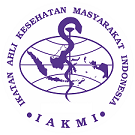Poisson Probability Count Variable Model and An Eigen-Bayesian Semi Parametric Eigen Autocorrelation for Optimizing Mapping Fentanyl Mortality in Hillsborough County, Florida
DOI:
https://doi.org/10.26911/jepublichealth.2025.10.02.08Abstract
Background: Currently, there is a lack of precision count variable models for mapping fentanyl fatalities. The primary objective of this article is to develop a predictive count variable model for mapping county level fentanyl related deaths using scalable zip code capture point census data.
Subjects and Method: This ecological study focused on all zip codes within Hillsborough County, Florida. The target population included residents across these zip codes, with fentanyl related mortality data aggregated per area. Total population sampling was applied using secondary data from census and mortality records. The dependent variable was the count of fentanyl related deaths, while independent variables included sociodemographic indicators obtained from the U.S. Census Bureau. Variable measurements were based on standardized public data sources. Data were analyzed using a multicount Poisson regression model. As no overdispersion was detected (variance inflation factor <10), neither negative binomial regression nor stepwise regression was required. Spatial analysis and autocorrelation were conducted using ArcGIS, with the primary predictor further interpolated to identify geographic patterns.
Results: Variable selection for the primary predictor was performed by observing the relationship between the standard error of each tested independent variable and its associated Z score. Given the identified relationship between fentanyl mortality and white populations, from the selection process, a spatial autocorrelation hot and cold spot analysis was conducted. This analysis identified zip codes with the highest and lowest predicted likelihood of fentanyl caused deaths (as opposed to deaths where fentanyl was merely present). The identified zip code locations were 33647 and 33810 for the hot spots.
Conclusion: Count variable models and autocorrelation hot/cold spot mapping offer a methodological framework for future modeling efforts to predict locations of fentanyl mortality for preven-tative means.
Keywords:
Fentanyl caused Deaths, FPoisson Regression, Spatial AutocorrelationReferences
Blatt A, (2024). Addiction: A Complex Disease Requiring a Multifaceted Treatment Approach. American Addiction Centers.
Cameron AC, Trivedi PK (1998). Regression analysis of count data. Cambridge: Cambridge University Press. doi: 10.1-017/CBO9780511814365.
Centers for Disease Control and Prevention (2024). Safety and effectiveness of syringe services programs. Centers for Disease Control and Prevention
Centers for Disease Control and Prevention (2024). The facts about fentanyl. Centers for Disease Control and Prevention.
CDC (2024). Achieving Health Equity Around Overdoses. Centers for Disease Control and Prevention
Creasy SL, Thompson JR, Mair CF, Burke JG. Understanding Polarizing Community Perspectives on Harm Reduction Strategies: Challenges to Addressing the Opioid Crisis in Appalachian Pennsylvania. J Appalach Health. 2021 Oct 25;3(4):74-88. doi: 10.13023/jah.0304.07.
Drug Enforcement Administration (2024). National drug threat assessment 2024. Drug Enforcement Administration.
Drug Enforcement Administration. (2021). Facts about fentanyl. Drug Enforcement Administration.
Fickas K, Viswambharan V, Tuteja P (2023). Unlocking landscapes: landcover mapping using pretrained deep learning models. ArcGIS Blog.
Gelman A, Carlin JB, Stern HS, Dunson DB, Vehtari A, Rubin DB, Carlin J, et al. (2013). Bayesian data analysis. Third.
Goldberger B, Wang Y, Iyer A, Johnson T, Delcher C, Shin E (2025). FROST: overview for fentanyl involved cases in 2021 (Florida). UF Academic Health Center.
Griffith DA (2003). Spatial autocorrelation and spatial filtering. Berlin, Heidelberg: Springer Berlin Heidelberg. doi: 10.1007/978-3-540-24806-4.
Hosmer DW, Lemeshow S (2000). Applied logistic regression. Wiley. doi: 10.10-02/0471722146.
Jacob BG, Izureta R, Bell J, Parikh J, Loum D, Casonova J, Gates T, et al. (2023). Approximating non-asymptoticalness, skew heteroscedascity and geospatio temporal multicollinearity in posterior probabilities in Bayesian eigenvector eigen geospace for optimizing hierarchical diffusion oriented COVID-19 random effect specifications geosampled in Uganda. Am J Appl Math Stat. 2023(1):1–43.doi:10.5923/j.ajms.20231301.01.
Jacob G, Mendoza D, Ponce M, Caliskan S, Moradi A, Gotuzzo E, Griffith DA, et al. (2014). Pseudo R2 probablity measures, Durbin Watson diagnostic statistics and Einstein summations for deriving unbiased frequentistic inferences and geoparameterizing non zero first order lag autocorvariate error in regressed multi drug resistant tuber¬culosis time series estimators. Am J Appl Math Stat. 2(5): 252–301. doi: 10.12691/ajams 251.
Jalal H, Burke DS (2021). Carfentanil and the rise and fall of overdose deaths in the United States. Addiction. 116(6): 1593–1599. doi: 10.1111/add.15260.
Kim H, Kriebel D (2009). Regression models for public health surveillance data: a simulation study. Occup Environ Med. 66(11): 733–739.
Lim TY, Dong H, Stringfellow E, Hasgul Z, Park J, Glos L, Kazemi R, et al. (2024). Temporal and spatial trends of fentanyl cooccurrence in the illicit drug supply in the United States: a serial cross-sectional analysis. Lancet Reg Health Americas. 39: 100898. doi: 10.1016/j.lana.2024.100898.
Luty J, Rao H, Arokiadass SMR, Easow JM, Sarkhel A (2008). The repentant sinner: methods to reduce stigmatised attitudes towards mental illness. Psychiatric Bull. 32(9):327–332. doi: 10.1192/pb.bp.107.018457.
Medical Examiners Commission (2022). Drugs identified in deceased persons by Florida medical examiners 2021 annual report.
Moran PAP (1950). Notes on continuous stochastic phenomena. Biometrika. 37(1/2): 17. doi: 10.2307/2332142.
Pikul C (2024). What to know about the first overdose prevention center in the U.S. Brown University.
Stanley TH (2014). The fentanyl story. J Pain. 15(12): 1215–1226. doi: 10.10-16/j.jpain.2014.08.010.
State of the Region. (2024).Our region. State of Region.
Truth Initiative (2018). Opioid dependence can happen after just 5 days. Available at https://truthinitiative.org/research-resources/substance-use/opioid-deendence can happen after just 5 days (Accessed: 2 January 2025).
US Census Bureau. (2021). ACS demographic and housing estimates, American Community Survey, ACS 5 year estimates data profiles, table DP05. Available at https://data.census.gov/table/ACSDP5Y2021.DP0 (Accessed: 9 March 2024).
US Census Bureau. (2024a). Gazetteer files. Available at https://www.census.gov/geographies/reference files/time series/geo/gazetteer files.html (Accessed: 3 March 2025).
US Census Bureau. (2024b). QuickFacts Hillsborough County, Florida. Available at https://www.census.gov/quick facts/fact/table/hillsboroughcountyflorida/PST045223 (Accessed: 9 October 2024).




1.jpg)








